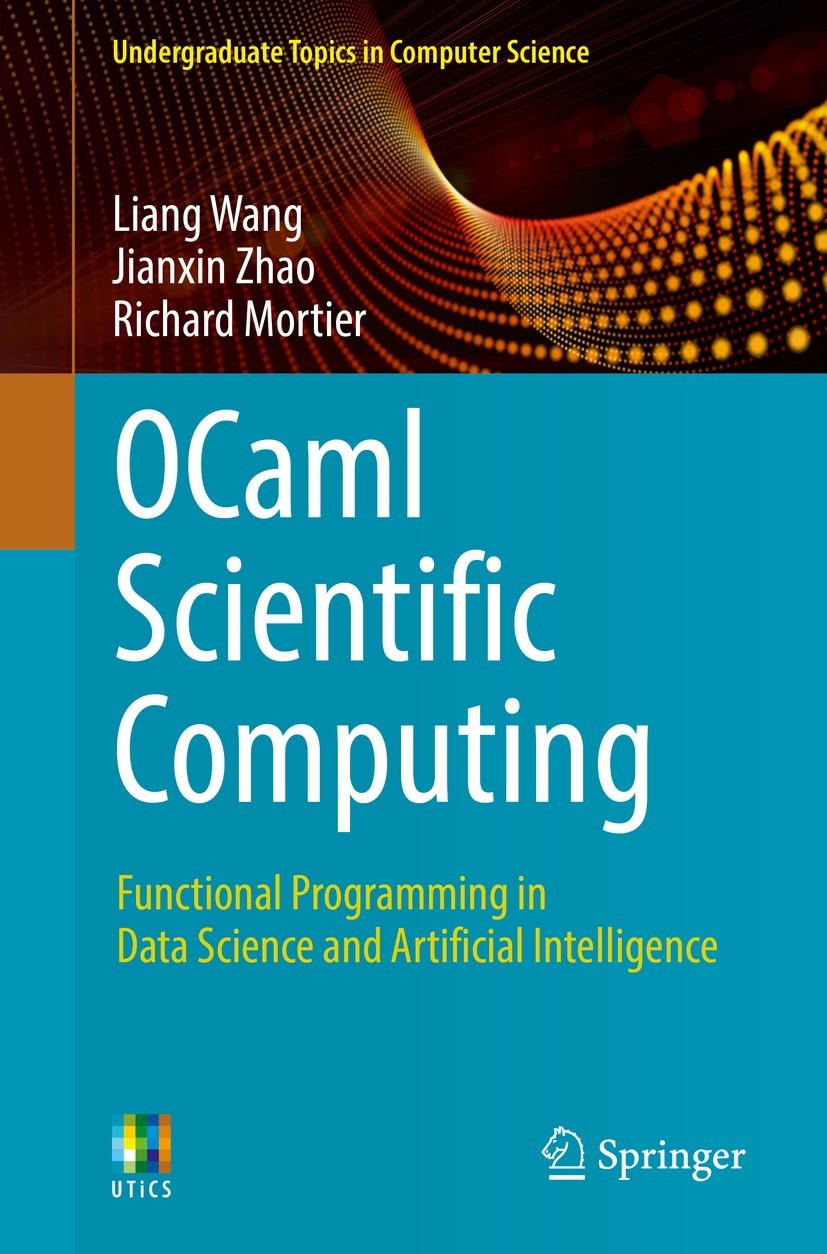| 書目名稱 | OCaml Scientific Computing | | 副標(biāo)題 | Functional Programmi | | 編輯 | Liang Wang,Jianxin Zhao,Richard Mortier | | 視頻video | http://file.papertrans.cn/701/700010/700010.mp4 | | 概述 | Shows how the expressiveness of OCaml allows for fast and safe development of data science applications.Exemplifies use cases drawn from many areas of Data Science, Machine Learning, and AI.Explains s | | 叢書名稱 | Undergraduate Topics in Computer Science | | 圖書封面 |  | | 描述 | .This book is about the harmonious synthesis of functional programming and numerical computation. It shows how the expressiveness of OCaml allows for fast and safe development of data science applications. Step by step, the authors build up to use cases drawn from many areas of Data Science, Machine Learning, and AI, and then delve into how to deploy at scale, using parallel, distributed, and accelerated frameworks to gain all the advantages of cloud computing environments..To this end, the book is divided into three parts, each focusing on a different area. Part I begins by introducing how basic numerical techniques are performed in OCaml, including classical mathematical topics (interpolation and quadrature), statistics, and linear algebra. It moves on from using only scalar values to multi-dimensional arrays, introducing the tensor and Ndarray, core data types in any numerical computing system. It concludes with two more classical numerical computing topics, the solution ofOrdinary Differential Equations (ODEs) and Signal Processing, as well as introducing the visualization module we use throughout this book. Part II is dedicated to advanced optimization techniques that are core | | 出版日期 | Textbook 2022 | | 關(guān)鍵詞 | OCaml; Scientific Computing; Functional Programming; Machine Learning; Numerical Analysis; Programming La | | 版次 | 1 | | doi | https://doi.org/10.1007/978-3-030-97645-3 | | isbn_softcover | 978-3-030-97644-6 | | isbn_ebook | 978-3-030-97645-3Series ISSN 1863-7310 Series E-ISSN 2197-1781 | | issn_series | 1863-7310 | | copyright | The Editor(s) (if applicable) and The Author(s), under exclusive license to Springer Nature Switzerl |
The information of publication is updating

|
|
 |Archiver|手機(jī)版|小黑屋|
派博傳思國際
( 京公網(wǎng)安備110108008328)
GMT+8, 2025-10-11 06:22
|Archiver|手機(jī)版|小黑屋|
派博傳思國際
( 京公網(wǎng)安備110108008328)
GMT+8, 2025-10-11 06:22


